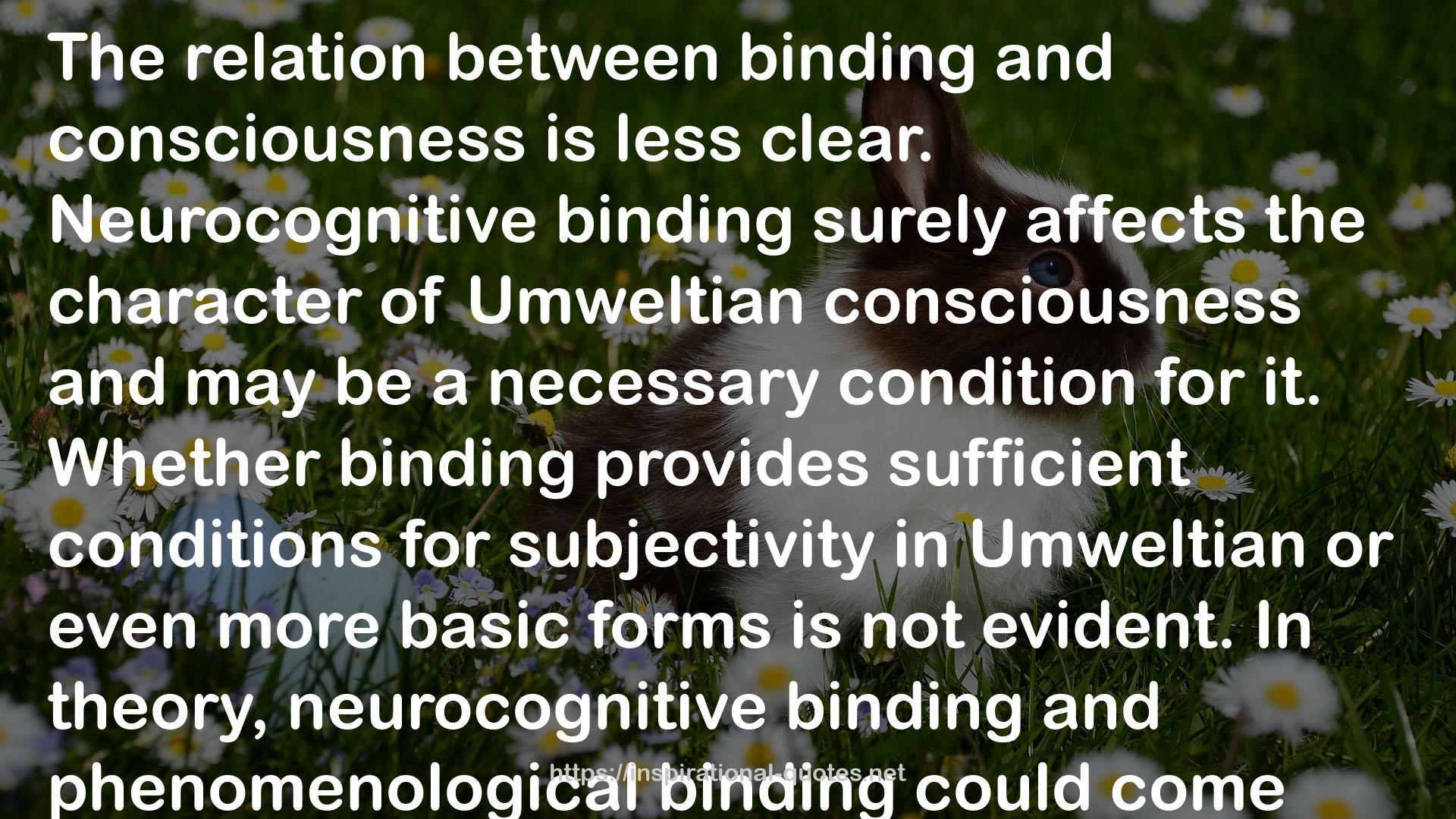" The relation between binding and consciousness is less clear. Neurocognitive binding surely affects the character of Umweltian consciousness and may be a necessary condition for it. Whether binding provides sufficient conditions for subjectivity in Umweltian or even more basic forms is not evident. In theory, neurocognitive binding and phenomenological binding could come apart - this would be implied, for example, by evidence that bound representations are sometimes formed outside of subjective experience. One possibility is that binding may not be sufficient for phenomenal consciousness unless it also includes affective content that projects meaning onto objects and events, then bound representations that lack affective content would fail to generate conscious experience. It could be, for instance, that bound representations are formed by the synchronous firing of distributed neural systems that specialize in different features of the scene, but that this bound representation must then be made accessible to the wider system for memory, categorization, and affective response if it is to become part of the stream of consciousness. And if this is so, then information integration would not be sufficient to generate subjectivity. Although much of this picture remains opaque, work on binding is providing the first glimpse of how the Umwelt was made. "
― , Contingency and Convergence: Toward a Cosmic Biology of Body and Mind
